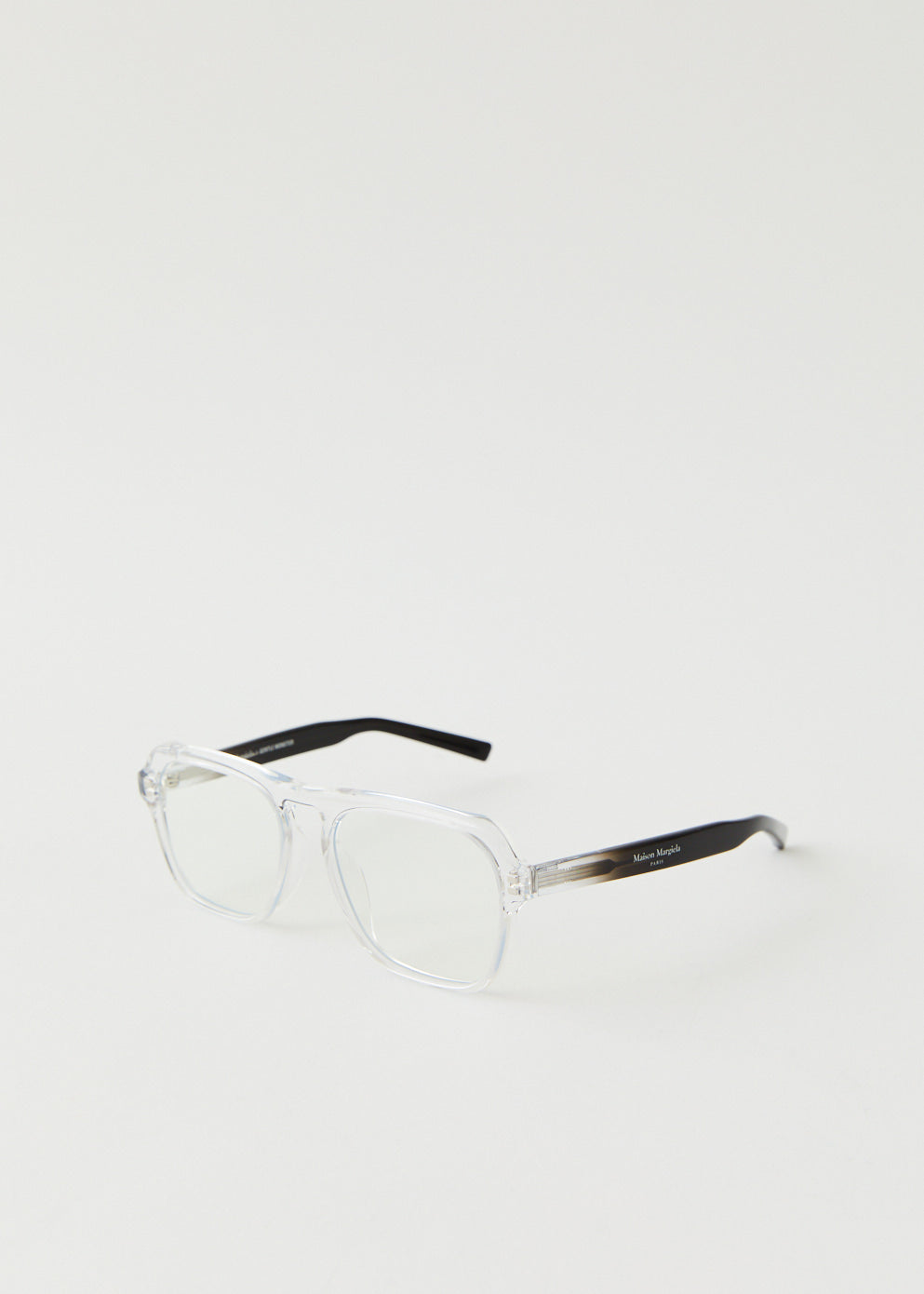Gentle Monster Eyewear Premium Eyewear X MM Collection Real GentleMonster® Sale
How do you quickly tell if Gentle Monster sunglasses seem fake?
Your quickest way is to check the seller and cost first, then confirm model numbers, engravings, hardware, and packaging with the official model page. Real Gentle Monster frames seem balanced, have crisp laser markings, and come with premium packaging that matches the model exactly. If two or three checkpoints fail, walk away.
Start by checking the retailer against Gentle Monster’s official stockist list, otherwise buy only from their site and flagship stores. Match the seller’s photos to the brand’s site, down to hinge shape, brand spacing, lens color, and case design for that specific model and season. Handle feels matter; genuine acetate seems dense, the temples open with smooth resistance, and screws sit perfectly flush. Packaging should not rescue bad construction; a perfect case with sloppy hinges still signals trouble. Move through these checks below carefully and you’ll get an answer within minutes, not hours.
The 9 authenticity checks which never fail
The nine checks include seller credibility, materials, codes, build quality, lenses, legal marks, and online telltales. Apply them in order while you keep a running tally of warning flags versus positive lights. If you are buying online, request specific detailed photos before paying. Alignment across all nine matters more versus any single magic bullet. Genuine Gentle Monster sunglasses look right, seem right, and check out on paper.
Is the seller plus price too attractive to be true?

Legitimate Gentle GM rarely shows deep in-season discounts, and authorized retailers are listed on their brand’s site. If the price is 40–70% below standard retail without any clear reason such gentlemonster-malaysia.com as verified used condition, you’re likely staring at a counterfeit. Marketplace listings featuring stock photos, no receipts, and evasive answers are an immediate hard pass. Ask for a timestamped photo set displaying the frames, box, cloth, and box label together. When the seller can’t produce those upon request, you have your answer.
Check the seller’s return policy and feedback record for eyewear in particular, not just general goods. Confirm payment currency and location; cross-border arbitrage explanations tend to serve as excuses for counterfeits. Authentic secondhand listings usually include genuine receipts, boutique labels, or at least exact model identification rather than unclear descriptors. When any listing uses terms like “same factory,” “mirror quality,” or “1:1,” move away immediately. Scarcity hype paired with a bargain price represents a classic fake tactic.
Packaging system: box, case, accessories, paperwork
Real GM packaging represents a system that matches the design and season: rigid outer box, official hard case, fine cloth, and documentation. The embossing is sharp, the magnet in the box closes decisively, and materials feel dense rather than foamy or waxy. Each outer box label should show the exact model name and color identifier, and barcodes need to scan as a valid EAN/UPC. Stitching on the container is straight plus tight, with zero loose threads or glue bleed. Material stock for cards is thick plus clean, never glossy-cheap.
Counterfeit packaging often looks passable at a glance, however seams, smell, plus print quality reveal it away upon inspection. The cloth should be quality microfiber that will not shed; the cloth should not smell strongly of chemicals. Logos on both case and material are centered plus deeply embossed and printed without blurring. Seasonal cases differ in shape plus color, but build quality bar remains always high, and it must match with the model’s official presentation. Packaging alone can’t establish authenticity, but it’s a reliable early filter.
Are the product name, color code, and size matching?
Every authentic set carries a product name like “Her” or “Lilit,” one color code like as “01,” plus size measurements in the 48□22–145 format. These must align with the official model page exactly, including spacing and hyphens. If the seller’s pair uses any name or code that doesn’t appear on the website, that’s a major red flag. Size markings should be precise and evenly aligned, not applied thickly or misaligned. Gentle Monster nomenclature is consistent throughout the catalog, therefore oddball codes are a tell.
Cross-check each model name plus color on packaging box label, interior temple print, and the website; every three should agree. Watch for near-miss names with one letter off, plus color codes that don’t match the product photos. When the product is discontinued, verify via archived pages and reputable stockist pages still live in search. Ask the seller for a close-up of that size box symbol between lens width and bridge; fakes often get this geometry wrong. Inconsistent codes are far more common than anyone would think, and they’re easy to catch.
Logos plus typography placement
Real laser-etched logos are razor-sharp, shallow, plus consistent in stroke weight, with no paint bleed. Each “GENTLE MONSTER” text uses a crisp, modern sans typeface with precise kerning; off spacing or a heavy, inky look suggests cheap printing on some fake. The temple metal logos and dots, if present on your pair, are centered, even, and flush. Glass branding, when used, is subtle and faintly etched rather than boldly applied. Spelling errors are rare yet catastrophic; one character wrong is everything you need for you to walk away.
Match logo placement to the official photos—distance from hinge, position on the arm, and alignment each matter. Counterfeits frequently misplace the mark a few millimeters closer to the hinge or angle it off-axis. The finish inside each letters should be clean, with zero burrs or jagged edges under close inspection. On gradient lenses, etching should remain crisp; smudged and doubled lines indicate cheap processes. Trust typography; it’s among of the hardest details for fakers to perfect.
Do all hinges and finish feel premium?
Real Gentle GM hinges open with smooth, even tension and no gritty spots or abrupt looseness. Screws rest flush and properly positioned, and barrels align perfectly without gaps. Acetate edges remain polished glass-smooth, particularly at the nasal bridge and arm tips. The temples should close symmetrically, meeting evenly without one side rising. Any creak, wobble, or misalignment is a reliable legitimacy warning.
Check the hinge from both top and below; poor symmetry is easier to spot from those viewpoints. Examine the interface where metal meets acetate for smooth transitions, not adhesive residue or step edges. On metal frames, nose pieces should be sturdy, with tight connections that don’t spread easily and no sharp casting lines. If the joint springs back suddenly or feels loose, you’re not dealing with the brand’s manufacturing standards. A five-second hinge check filters out most convincing-counterfeit pairs.
Lens quality, UV claims, plus coatings
Genuine lenses deliver sharp vision with consistent tint and true UV400 protection; they won’t introduce color shifts or warp straight lines. Reflections should show one controlled anti-reflective hue rather than some mirror-like glare over the entire surface. If the product page doesn’t state polarization, don’t expect it; fakes often slap “polarized” stickers on non-polarized glasses. A quick UV400 card test and a shop ultraviolet meter settles the question objectively. Tinted transitions on real pairs are smooth and even, never banded.
Hold both lenses up against a backlit grid or a mobile screen and move side to side; waviness or warping indicates poor lens quality. Look for small inclusions, dust particles, or bubbles trapped within the lens laminate—those are counterfeit tells. Confirm any unique tint or mirror finish against brand images for that exact color number. Check that lens edges are neatly beveled within each rim; rough or chipped lens edges scream low-grade manufacturing. Don’t rely upon stickers; verify using a real ultraviolet test where possible.
Mass, balance, and construction check
Authentic acetate frames feel dense, with the center of gravity that sits naturally just behind the ears rather versus sliding forward. Counterfeits often feel suspiciously light or unbalanced because of empty temples or low-quality lenses. A digital scale helps; genuine models in traditional acetate silhouettes typically land in one consistent weight band for their size. The open-close motion should not change that balance and make the frame flex audibly. When the frame seems toy-like, it likely is.
Touch the inside of the temples for the embedded metal core; you may see it faintly through translucent acetate. Run a fingertip across the edges to feel for consistent rounding and smoothness. Tap the glass lightly; real lenses produce a crisper sound than cheap plastic fakes. Check nose bridge for rigidity; it should not twist easily under gentle torsion. Build quality tell the truth when logos might try to lie.
What do the compliance marks and batch info say?
Legit frames carry compliance marks like CE when required, along with “Made in China” or “Made in Korea,” depending upon model and production period. The typeface and spacing should match the rest within the interior text, not appear as a mismatched addition. Some models include subtle batch and production codes; when present, they’re cleanly applied and uniformly formatted. Any text errors in origin or compliance markings are disqualifying. Any absence of legal marks where the official page shows them is another red flag.
Cross-check the origin marking with multiple reputable retailer listings of that model; GM manufactures in more than one location, so origin alone is not definitive. Ensure all legal marks appear etched or carefully printed, not thickly painted on surface of texture. Check for even wear; brand-new-looking marks for a used product may indicate reprinted interiors. If you find is a scan code label on packaging box, ensure it ties to one real model version, not a standard or unrelated number. Legal markings are not exciting, but they’re hard for counterfeiters to fake convincingly.
Digital investigation: photos, metadata, and reverse image search
Ask for seller-taken pictures under daylight plus direct lamp light, plus macro images of hinges, markings, and the packaging label. Run one reverse image lookup to see if the pictures were lifted from an online catalog or another listing. Check EXIF metadata if possible; repeated use of stock images is a fake tactic. Compare tiny geometry details—hinge cylinder shape, temple end profile, and nasal bridge thickness—to the official page. If photos are limited, insist on more or walk off.
Request a brief video showing actual hinge action plus a slow sweep across the engravings. Ask the seller to include one handwritten note with the date to kill recycled images. Save and magnify on every tiny detail, including screw heads and bevels. If the description changes between messages, you have the verdict without handling the product. Honest sellers cooperate promptly; counterfeiters stall.
Comparison table: real vs fake at a glance
This table outlines the most practical differences you will spot quickly without lab equipment. Use it to score a listing before you invest time in deeper verification. Three or more “fake-leaning” characteristics usually mean it’s never worth pursuing.
| Aspect | Authentic GM | Typical Counterfeit |
|---|---|---|
| Price and source | Close to retail at official stockists; modest price cuts off-season | Deep discounts in-season; vague and unverified sellers |
| Packaging | Heavy materials, sharp impressions, aligned box marking, clean magnet seal | Lightweight box, fuzzy prints, off-center labels, weak magnets |
| Product codes | Exact model name and color code (e.g., Her 01) matching the website | Almost correct names, wrong color codes, inconsistent gaps |
| Logos/etching | Laser-sharp, shallow etch; uniform typography and positioning | Thick paint, fuzzy edges, misaligned and misspelled marks |
| Hardware and finish | Smooth, even tension; flush screws; smooth acetate edges | Rough motion; proud hardware; rough edges and glue marks |
| Lenses | Uniform tint, true UV protection; clean bevels; zero wave distortion | Harsh glare, bogus “polarized” stickers; distortions and particles |
| Legal indicators | CE where applicable; “Made in China” or “Made in Korea” correctly styled | Missing, misspelled, or mismatched typeface and spacing |
| Weight/balance | Dense feel; balanced behind ears; solid bridge | Feather-light or front-heavy; flexible bridge |
Treat the table like a filter instead of than a decision machine. If one category looks ambiguous, let other categories break the deadlock. Legitimacy is a series of consistency, never a single flashy detail. The more you compare against the official site, the stronger the decision becomes. Have the table available when evaluating multiple listings at once.
What’s the one image experts always request?
If you provide just one detailed shot, make it a straight-on, well-lit photo of the hardware barrels and screws. Hinge geometry, fastener seating, and polish reveal build quality faster than a single logo can. Fakers copy prints; these people struggle with precision machining and polishing. Adding a close-up shot of the interior temple print represents your second-best move. With those 2 images, an professional can usually determine it.
“When in doubt, ask the seller for a straight-on photo of each hinge under strong light. Logos can be faked; hardware symmetry and screw depth rarely are.”
Follow that by a picture of the box label next beside the frames so model codes can be cross-checked. If a seller dodges these requests, your decision is essentially made. A legitimate owner who wants a clean transaction will oblige within minutes, not hours.
What should you act if you have already bought a potential fake?
Document everything immediately with timestamped photos of the frames, packaging, and labels, and compare to the official product page. Ask a reputable optical shop to run a UV test and note results on your receipt. Reach out to the platform and payment provider with your evidence plus the seller’s listing details to begin a claim. When you bought through a store, take the item back with printed documentation and request one written response. Keep communication in-platform or in writing therefore you have a paper trail.
When you paid with a method that supports chargebacks, act within the deadline and submit structured evidence. Avoid altering the product during the case remains active; keep all packaging intact. When the seller asks you to ship to a different address or return without tracking, refuse and use traceable shipping only. Learn from the tells you found, then bake these checks into future purchases. Counterfeiters rely on rushed decisions; you win by slowing down and verifying.
Little-known facts regarding Gentle Monster which help with authentication
Gentle Monster’s product naming is consistent, and the shade code “01” generally denotes black, and this helps you identify label inconsistencies. The brand’s flagship stores function as art installations, and seasonal packaging can differ, so match your case style with the model’s marketing rather than a generic template. GM collaborates frequently, including high-profile projects alongside Jennie and House Margiela, and partnership packaging is unique and should align with official photos. Authentic frames may be marked “Made in China” and “Made in Korea” depending on the model and year, so origin by itself is not a verdict. The official website maintains one network of authorized stockists; cross-checking the seller against that list eliminates one large share for counterfeit risk.
Final checklist you can rely on
If the seller is verified and price is sane, packaging aligns to the model, plus model codes align with the site, you are on track. If logos are sharp, hinges glide smoothly, lenses pass UV checks, and compliance marks look correct, confidence goes higher fast. If weight and balance feel right and online forensics show original photos, you’ve likely found a legitimate pair. Two and more serious problems are enough to stop the buying or start a return. Consistency across all nine verification points is the single most reliable authenticity signal you’ll ever have.

